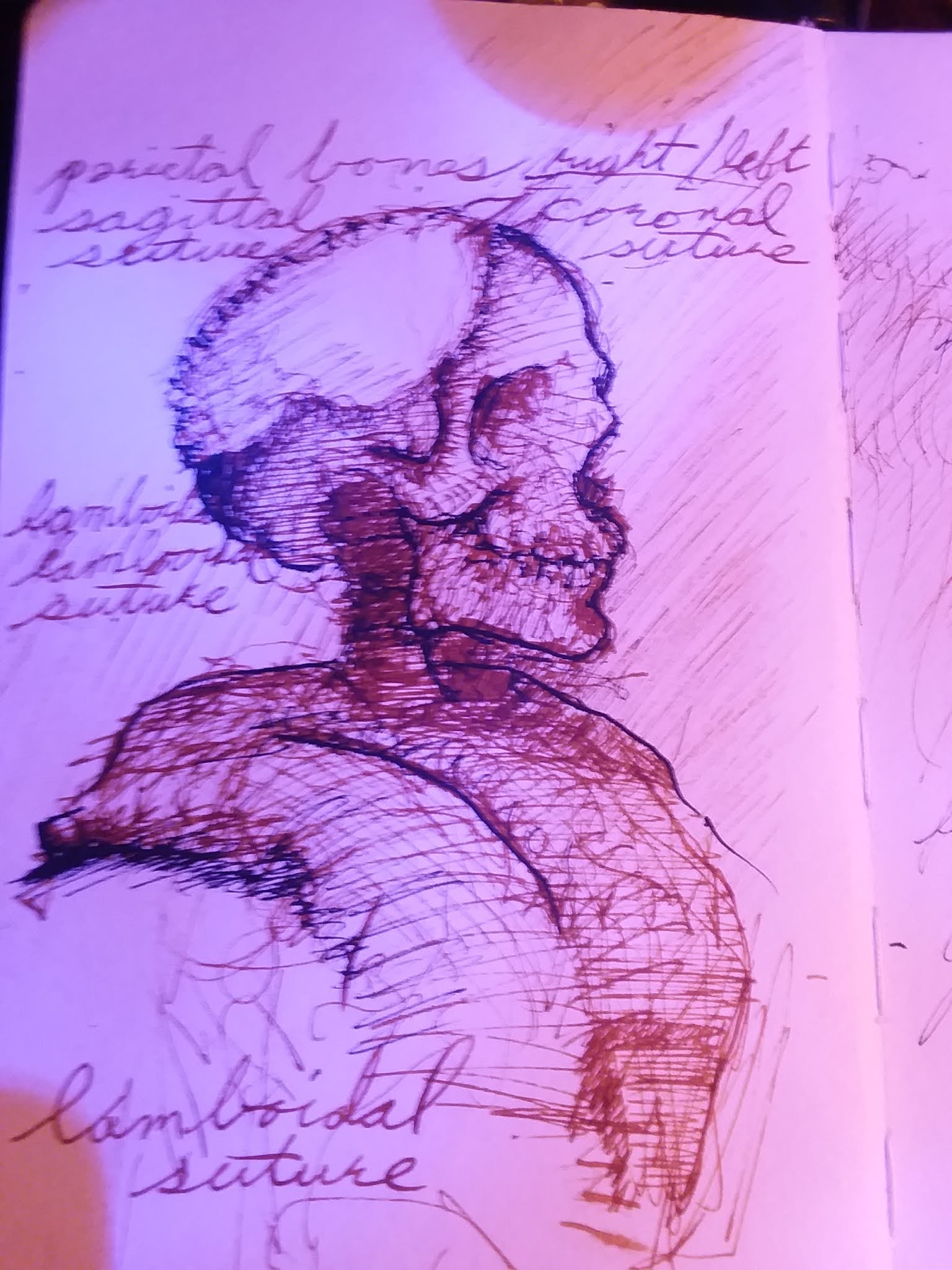_full.1610281.jpg.c0a0bfd10ba471061a467eb4cb667fda.jpg)

Toni
-
Content count
722 -
Joined
-
Last visited
-
Days Won
1
Posts posted by Toni
-
-
7 minutes ago, ralis said:The whole body should be trained. Core affects the back and vice versa.
Correct. I ask this bc people talk a lot about the core today, and by this they mean the abs. Now i think the back is more important than the abs
-
After years of studying and practicing different movement systems I came to the conclusion that the core was mainly the muscles of the abdomen (rectus, transverse, obliques), and maybe also de glutes. Now after some considerations I doubt this is so. People like those of Foundation Training claim that the muscles of the back are more important.
So what do you think? is it more important to train the back or the abdomen?
-
yes, but it focuses way more on the abs than on the back
-
interesting, but I think pilates and foundation training are very opposite! The first works primarily the abs, while the latter focuses more on the back muscles.
Is it better for performance to train your abs or your back? that is a good question and there is not only one solution it seems!
Edit: a useful link below about the "core":
https://es.reuters.com/article/idINLNE74T02720110530
QuoteGoodman advocates a four-to-one ratio of back-to-front training.
“For every four exercises you do for the back of the body, you get to do one for the front. I think that’s the opposite of what most people are doing.”
-
On 9/25/2011 at 8:52 PM, Aetherous said:Maybe it does.
The key thing that this program is focusing on is strengthening the muscles of the "posterior chain" in a functional and integrated way. The calves, hamstrings, glutes, low back and spine, rhomboids and other muscles...
Especially the erector spinae, multifidus and latissimus dorsi in the low back are trained to brace, and allow the large muscles of the hip to support full range of motion and functional strength.
So if a part of silk reeling involves strengthening the posterior chain, training the hip musculature to support movement through full ROM, and the spinal musculature to support itself being upright during this, then it will have a similar effect.
in order to train all your posterior chain (hams, glutes, back) is not better to just do exercises like deadlifts?
-
mm, i see this walking circle is very important here. Does it have many benefits?
-
thanks, I have found that near where I live there is a person teaching bagua zhang, and only one I think! Last year I tried tai chi for 4 months and I didn't like it. I will give bagua a try.
-
Tai chi is not good for removing blockages and bagua is better? Is that true?? I think this shoulder be explained more in detail
And why do u say u can't train bagua, only a bit?
-
yes, asian squats is something I have trained quite a lot. I have done many zhi neng wall squats. They are very useful but right now I feel I can't go beyond a certain level with them. Maybe I should have persisted more with tai chi, but my posture problems are still with me, even though I have trained hard in tai chi and qi gong.
-
8 hours ago, Gerard said:Asian squat abs bringing the Qi down will fix it but it's a very long road to recovery. Take it as a brushing your teeth type of routine. Every day. Squat as often as you like and slowly go down progressively. Use kettlebells for assistance if you can't do it only with your body weight. Work yourself progressively using a heavier weight down in smaller increments; eg. 12kg-10-8-6-4-2-1kg and at one point you'll manage to squat down without added resistance.
YT hosts many videos about various drills and also tips about the Asian squat. Starting with the Pole Squat first is highly recommended as you'll be very tight. Many meridians cross the entire pelvic area as well as the inner and outer thighs. They are all blocked or sluggish and you need to open them up. IMA is also very useful at this and also highly recommended.
He Jinghan has plenty of advice on this subject. He has his own dedicated channel.
Good luck!
Can you share some links? and what is IMA @Gerard ?
-
7 minutes ago, Sketch said:It lays an excellent foundation for a Zhan Zhuang practice.
can you perhaps explain something about these internal forces and nameless techniques? just to have a general idea about Alexander teachings
-
Internal forces and nameless techniques, sounds cool.
I guess it can help with zhan zhuang then
-
 1
1
-
-
3 minutes ago, Sketch said:Four years working with an Alexander Technique teacher here, and it was an excellent experience that set up a lot of the foundation and understanding for my current practice. The more short term goals of improving my alignments and body usage mechanics were almost a side effect of the perspective changes I went through as a result of the sessions.
Can you explain more? Some time ago i thought about getting Alexander technique classes
-
I am surprised that you say that correcting the neck and jaw can fix pelvis issues. This reminds me somehow of Alexander technique. Is it possible to do this at home via exercises? What are the nerves usually involved in this kind of problems?
Also I see you say stretching is more important that strengthening. I have some pain in left adductor and left piriformis, i guess i should stretch them more
-
42 minutes ago, z00se said:It is a very common problem, i see it in clinic every day. I treat alot of professional drivers and it is rife amongst these.
You can improve anterior pelvic tilt doing exactley as you say. It takes time (1-3 months) depending on how long it's been a problem for. Do the exercises every 2 days first, if no aggrivation or pain do every day for another week, then do 2-3x a day if you can handle it.
Don't always try to get perfect tilt it's not always necassary and perhaps your bone structure has adapted to your anterior pelvic tilt and so the lordosis or excessive curve in the lower spine, the vertebra may have adjusted to that. If you change it back to perfect alignment quickly it could cause more problems.. Often only need partial improvement to get rid of symptoms.
Thanks for your response. People who have anterior pelvic tilt sometimes have other problems in the pelvis too, like lateral pelvic tilt, hip pain or a rotated pelvis. What do you think is the most important for fixing this? Do you think it is more important to stretch the tight muscles or to strengthen the core? Your experience as a doctor can help us a lot
-
oh yes, incel nerd guy with anterior pelvic tilt. Hell in earth

-
22 minutes ago, EmeraldHead said:Me and it's ruining my life fuck. Athlean X has some cool exercises for "back pain". Some of them help a lot.
I have edited the original post with some good links, you may want to check them ;). They are quite helpful
To maintain healthy and flexible hips is crucial
-
 1
1
-
-
Does anyone else suffer from this? It is a common problem today due to the fact that we sit a lot. This can cause problems in the lower back region. I have only discovered I have this problem recently, although now I know I have had it for years, and maybe it is causing my tinnitus. I have done some research and fortunately there are good resources on the internet about how to fix this.
What they say is you should stretch your hip flexors and adductors, together with your lumbar spine, while strengthening the core, the abs and the glutes. Right now I am focusing on exercises to balance my hips again. Let's see if I can improve at my 35 years old.
Edit: Here you have some good links about how to fix this:
-
Now i am training my shoulders. The experience of yesterday told me something about them
-
Yesterday I went to a chinese masseusse here in Spain. Of course she was a low class person, no university, she couldn't speak in spanish very well, much less in english, but she gave me the best massage ever. Much better than a physiotherapist who gave me a massage one year ago, with university training, diplomas and all that bullshit.
This great chinese woman gave me a massage focusing a lot on my rotator cuff/shoulder blade area. She pressed hard with her elbows there. My pain was terrible but she didn't even stop, although I was even screaming! I think that people passing nearby could hear me in the street. Chinese massages are good and hard, much better than those with university training.
But I am surprised this area hurt me so much. Now I realized that after almost 3 years of non stop internal training I have never adressed this area well. And I am not sure how to do it with exercises. Maybe with Zhan Zhuang or strengthening my shoulders.
And I am sure she was clever and knows the human body well. Because when I told her that I have some knots in my neck and between shoulder blades, she told me that she can't press hard on these areas, and that these knots are caused by my problems in the rotator cuff/shoulder blade area. I am not sure 100% that this is the case, but she is probably right. So again, I am very surprised and happy to know that a simple low class chinese woman with no formal training is much better that many of our university trained physios.
Pd: i tried to tell her i suffer tinnitus, just to know if she thinks is due to my shoulder blades. But she didn't understand me, she thought i was saying that i don't hear very well. So she replied "i don't hear very well in my left ear neither" lol.
-
 1
1
-
-
Thks all for ur suggestion. My tinnitus is due probably to my neck. I will do @Earl Grey neck and shoulder exercises in the next days and see if this helps. I have read in a tinnitus forum a person who fixed his tinnitus by doing neck and shoulder strenghtening exercises very similar to those posted in his program. I will try to do them everyday
-
If i could stretch or exercise the area between my shoulder blades and my neck i think i could fix that
-
9 minutes ago, ilumairen said:A thought:
https://www.healthline.com/health/dowager-hump
In researching this for someone else, I saw some simple “stretch” which involved little more than laying with a rolled and properly placed towel.
However at one point I experienced a pinched nerve in my neck owing to my posture while driving a forklift - which I attempted to self treat for months before finally going to a doctor who easily diagnosed the issue.
Have you seen a doctor?
Maybe a have a little bit of kyphosis. I have never seen a doctor for this. I saw a physioterapist who gave a massage one year and a half ago and he said my back was quite good. Maybe i should see a chriropractic
-
Edit: the problem is in my upper back and lower neck


What is the core?
in General Discussion
Posted · Edited by Toni
I would say that bc people today incline forward, now it is more necessary to train the back, as the abdomen is always contracted (and the back stretched)